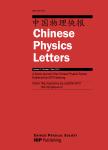Modification of Optical Band Gap and Surface Morphology of NiTsPc Thin Films
修改OpticalBandGap SurfaceMorphology的NiTsPc薄膜作者机构:Low Dimensional Materials Research CentreDepartment of PhysicsFaculty of ScienceUniversity of Malaya50603 Kuala LumpurMalaysia
出 版 物:《Chinese Physics Letters》 (中国物理快报(英文版))
年 卷 期:2012年第29卷第12期
页 面:156-160页
核心收录:
学科分类:08[工学] 080502[工学-材料学] 0805[工学-材料科学与工程(可授工学、理学学位)]
基 金:Supported by the Ministry of Higher Education,Malaysia through FRGS Grant No FP007/2011A the University of Malaya Postgraduate Research Grant(PPP)under project number PS342/2010B
主 题:immersion quenching nickel
摘 要:We demonstrate the effects of solvent treatment on the optical band gap and surface morphology of nickel(ii)phthalocyanine tetrasulfonic acid tetrasodium salt(NiTsPc)thin *** optical band gap and surface morphology modifications are carried out by immersing the films in chloroform for different immersion times until the optimized time(60 min)is found.A Tauc plot is used to calculate the optical energy gaps,which are found to be about 2.70-2.85 eV and 1.43-1.50 eV,in the B and Q bands *** topography shows that more granular structures have been formed upon the optimized immersion ***(PL)quenching occurs in the solvent-treated NiTsPc film incorporated with a tris(8-hydroxyquinolinato)aluminium(Alq3)*** PL quenching indicates that the charge carrier transport is more efficient at the interface between NiTsPc/Alq3 as a result of the solvent treatment.



